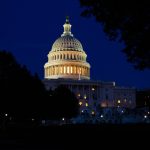In a bold move, the incoming Trump administration is gearing up to tackle the United States’ ongoing border crisis head-on. As the clock ticks down to January, President-elect Donald Trump has vowed to reverse many of the current administration’s immigration policies that critics say are too lenient. One glaring example of this perceived leniency is the anticipated launch of an ICE portal app in New York City, designed to simplify the process for migrants to check in with immigration authorities. However, experts say this app may inadvertently allow migrants to evade detection due to its notorious glitches and unreliability. With such policy shifts, the stakes at the southwest border are rising, and many are eager to see how the new administration will respond.
Tom Homan, Trump’s incoming border czar, is ready to hit the ground running. He believes that within months, the Trump administration can significantly tighten border controls—provided the government of Mexico is on board. One of the key elements of this strategy is the reimplementation of the “Remain in Mexico” policy, which requires asylum seekers to wait in Mexico while their claims are processed. Homan discusses the importance of returning to stricter measures like safe third-country agreements, arguing that these changes will send a strong message: crossing the border illegally will not be tolerated.
Homan is hardly shy about what he sees as the current administration’s failures. He points out that deportations of individuals with criminal backgrounds have plummeted to an all-time low under Biden. When comparing the two administrations, deportations of illegal aliens with felony convictions have declined by a staggering 74%. In Homan’s eyes, this lack of action is a threat to public safety. He asserts that there are plenty of individuals that the Trump administration can target for removal and that the number of illegal immigrants currently residing in the U.S. should act as a wake-up call to lawmakers across the nation.
Despite Homan’s plans, resistance from local officials could complicate matters. Several sanctuary cities, including Los Angeles, have made it clear that they will not assist in enforcing federal immigration laws. One particularly irreverent councilman even suggested that his city should completely disregard Trump’s policies. Homan is adamant that federal law supersedes local dictates and warns that any attempts to hinder enforcement will be met with firm action. It’s a high-stakes showdown that could lead to an increased federal presence in these cities, leaving many wondering how this will all unfold.
On top of all this, there are reports of dangerous criminal gangs, like Tren de Aragua from Venezuela, causing alarm across various states. With known gang operations now present in at least 17 states, Homan is prioritizing the dismantling of these groups. As he eyes the Biden administration’s approach to immigration—which he argues has enabled such criminal enterprises—Homan’s message is clear: the Trump administration will bring tougher measures to ensure that these gangs are put on notice. He views the easy pathways to the United States created by the current administration as facilitators for crime rather than solutions.
The clock is ticking, and the border crisis looms larger than ever. While the new approach promises stricter enforcement and prioritization of public safety, challenges from local officials resistant to cooperation add another layer of complexity. One thing is certain: the next chapter in America’s immigration story is set to unfold, and as always, everyone will be watching closely.




